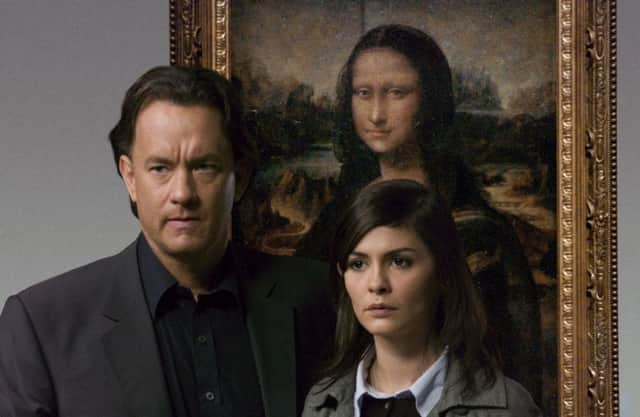David Martin- Jones: Scots movie industry deserves better billing


Today, Scotland beat off competition from rivals across the globe to clinch the top spot in a poll in the newspaper USA Today for the world’s “Best Cinematic Destination”.
The result only goes to show that Scotland is seen as a hot film tourism destination, with Outlander the latest draw to follow Braveheart, The Da Vinci Code and Brave. But we have not yet realised the full cultural value of film tourism for Scotland.
Advertisement
Hide AdAdvertisement
Hide AdIt is 18 years since Scotland brought the world the “Braveheart effect”, proving the link between the silver screen and resulting tourism. With 40 per cent of visitors to the UK attracted by its appearance on film or television, film tourism contributes millions to the Scottish economy.
Recent successes include VisitScotland’s innovative partnerships with Sony Pictures Entertainment to promote Scotland around The Da Vinci Code, and Disney Pixar to develop the Scottish-set animation, Brave.
As with Homecoming Scotland, a huge market that such promotional efforts appeal to is Scotland’s overseas diaspora; visitors in search of their cultural heritage. By turns, Scotland’s heritage is sustained by film tourism: Rosslyn Chapel’s conservation project was boosted by tourism after The Da Vinci Code, the profits from location shoots in National Trust properties contribute to their upkeep, and so on.
Yet, an altogether different audience is often left out of celebrations of film tourism’s economic worth – namely, us. Film tourism is not only the use of Hollywood films to attract international visitors. Film tourism also includes the local visitors who travelled to Tobermory on Mull in the 2000s, towed along by excited kids, to see the set of the CBeebies’ Balamory. It includes every one of us who sees a film at one of Scotland’s many film festivals, such as that in Edinburgh. It even includes the music fans who visit the annual Wickerman Festival in Dumfries and Galloway.
Suddenly a bigger picture emerges of film tourism’s potential cultural value for Scotland. As much as film tourism is economically lucrative for the nation, it is equally important for the cultural enrichment of society. To its credit the tourist industry is aware of this, and does much to cater for local visitors. Still, film tourism has an untapped potential to enrich the education of our children, inspire workers into the industry, and preserve a distinct aspect of our cultural heritage.
Examples of opportunities we are missing exist elsewhere. Where are the blue plaques for Scotland’s film directors, producers, locations, etc? Blue plaques to prominent thinkers and writers are everywhere. Anyone visiting Portobello Road in London knows that George Orwell lived there. But in Scotland, where such examples do exist (like the weather-beaten plaque commemorating Local Hero at Pennan), they seem a heroic local affair. Shouldn’t we celebrate this aspect of our screen-based creativity as a nation, making this cultural heritage a part of the fabric of our everyday lives?
Of course not everything is so straightforward. Foregrounding our film and televisual heritage will require tailored practices for the specificities of Scotland’s regions. For example, Edinburgh has a beautiful cinematic heritage, from films like The Prime of Miss Jean Brodie and Greyfriars Bobby. Glasgow, by contrast, “disappears” when standing in for US locations (Philadelphia in World War Z), or, features in realist films exploring economic and social deprivation, with all the ethical difficulties surrounding “poorism” this would entail. But solutions can be found. Whilst a city like Edinburgh can foreground its cinematic history through film tours, Glasgow has its own natural advantages as a city of media, museums, and the Scottish Screen Archive. Might it one day host a standing exhibition to film? Or, in the absence of a dedicated space like the film museum at the Cinémathèque, Paris, might it provide the fertile ground in which to develop an online museum?
Such a museum, physical or virtual, could educate visitors about everything from John Logie Baird and the invention of television; to John Grierson’s influential role in developing the documentary; Scotland’s art cinema auteurs in the European pantheon (Bill Douglas, Bill Forsyth, Lynne Ramsay, Peter Mullan); our stars (Sean Connery, Ewan McGregor, Peter Capaldi, Kelly Macdonald); the musical scores of Cedric Thorpe Davies for Hollywood films in the 1950s; the locations which have made Scotland globally famous (from Whisky Galore! to Skyfall); the importance of Gaelic media; Bollywood films shooting in Scotland, etc. Then there is the rural/urban divide. In 2008, Nick James, editor of film magazine Sight and Sound, called for the preservation of the pier at Carsaig on Mull, from the atmospheric I Know Where I’m Going! (1945). Might we somehow retain the memory of such iconic sites without the cost of rebuilding? Could local artworks celebrate such rural sites, retaining their stardom in our cultural memory banks?
Advertisement
Hide AdAdvertisement
Hide AdThrough exhibition, education, art and the archive, film tourism can keep our cultural memory banks fresh. With each generation, cinematic memories fade. Children born now have never heard of Balamory, let alone Whisky Galore! With our new film studio on the way, learning about Scotland’s cinematic and televisual heritage should be as much a part of our cultural lives as Charles Rennie Mackintosh or Robert Burns.
l Professor David Martin-Jones writes about the aesthetics and geopolitics of global cinema. His recent books include Scotland: Global Cinema. He is based at the University of Glasgow